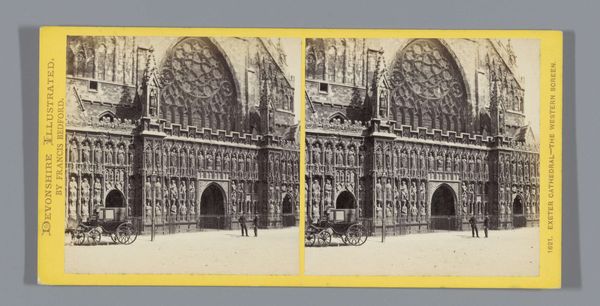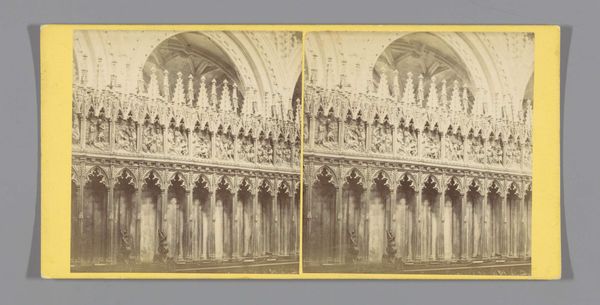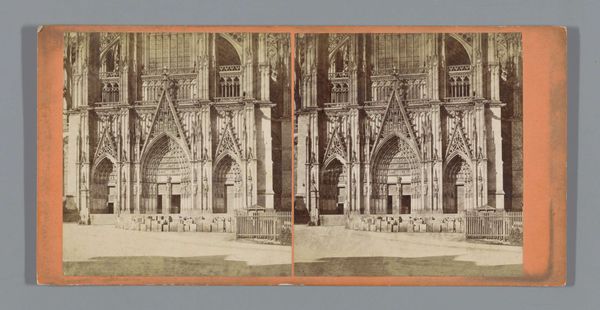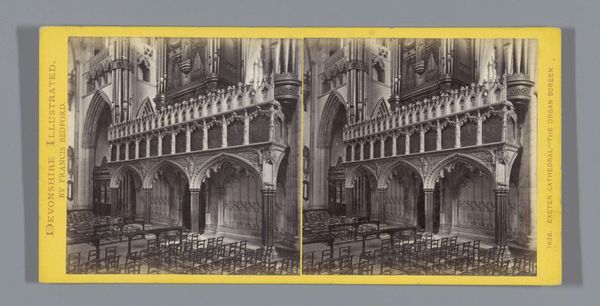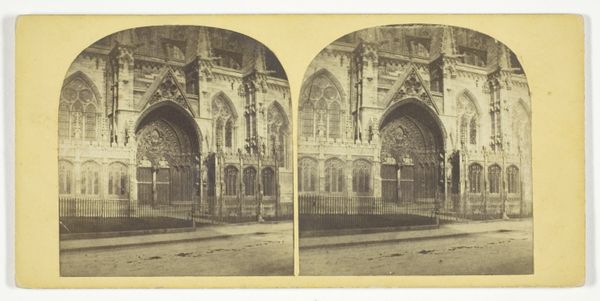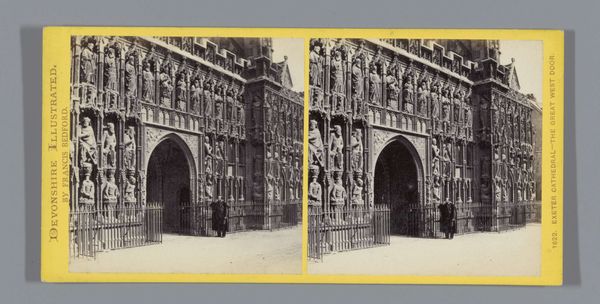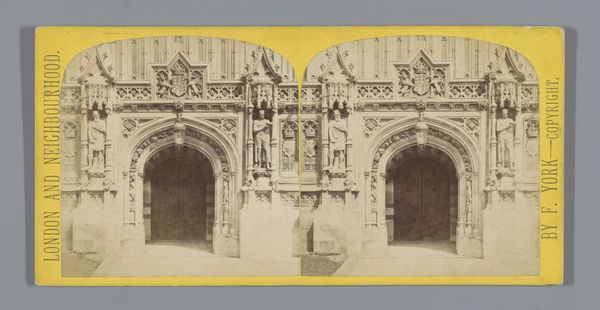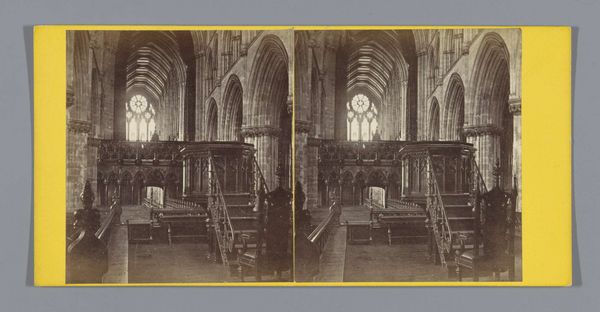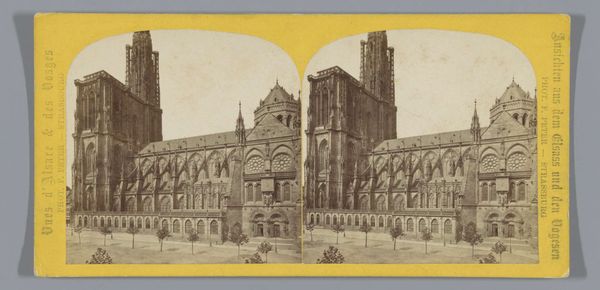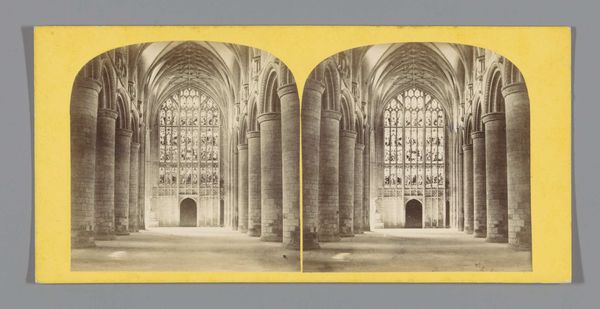
photography, gelatin-silver-print
#
paper non-digital material
#
landscape
#
photography
#
gelatin-silver-print
#
realism
#
building
Dimensions: height 85 mm, width 170 mm
Copyright: Rijks Museum: Open Domain
Curator: Alexander Wilson's "Gevel van de Kathedraal van Lichfield," dating roughly between 1850 and 1880, offers us a gelatin silver print view of the cathedral facade. Editor: Wow. The thing that hits me first is the sheer intricate detail; it’s almost dizzying. A silent symphony in stone and light. And yet… there's something melancholic about it, too. Like a memory fading at the edges. Curator: It is a captivating, though perhaps romanticized, image of religious architecture. Early photography offered a new mode of documentation, often framing structures like this within the narrative of Victorian progress and societal grandeur. How it represents itself to the public eye. Editor: Grandeur is right. Those arched portals look like mouths, whispering ancient prayers. It reminds me of a hushed, cavernous space filled with the scent of beeswax candles. You almost feel the echoes resonating, long after the choir has gone silent. The little people down in front really makes you feel the enormity of this cathedral too. Curator: And we shouldn't overlook that this type of photograph became collectible during the Victorian era; an affordable means for a growing middle class to possess glimpses of historically and culturally important sites like Lichfield. An early form of cultural tourism accessible to all. Editor: True. It becomes more than just art; it’s a portable piece of history. The soft greys and browns... it's gentle on the eye and so well organized. Did photography change the perception and expectation of this kind of design? Curator: Undeniably. Photography flattened hierarchies. Suddenly, visual records of grand architecture became readily available and influenced architectural representation. They could be infinitely reproduced for wider audiences, making cultural landmarks democratically accessible to people in new ways. It reframed both access and collective visual memory. Editor: It’s curious, though. For something so solid and monumental as the facade, the photo imbues it with an ethereal, almost transient feel. The fleeting quality of light, and the permanence of stone juxtaposed is just striking. Curator: That friction between permanence and ephemerality is a fascinating tension central to the impact this image had then and can still have now, yes. Editor: Right. So much to take away here. Curator: Absolutely. Thanks for contributing your artist's eye to our viewing today. Editor: My pleasure.
Comments
No comments
Be the first to comment and join the conversation on the ultimate creative platform.
